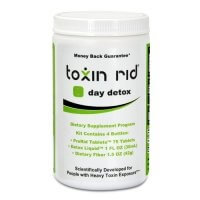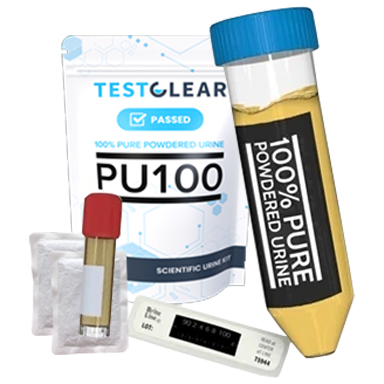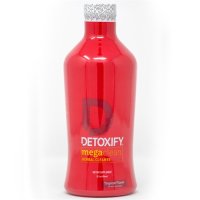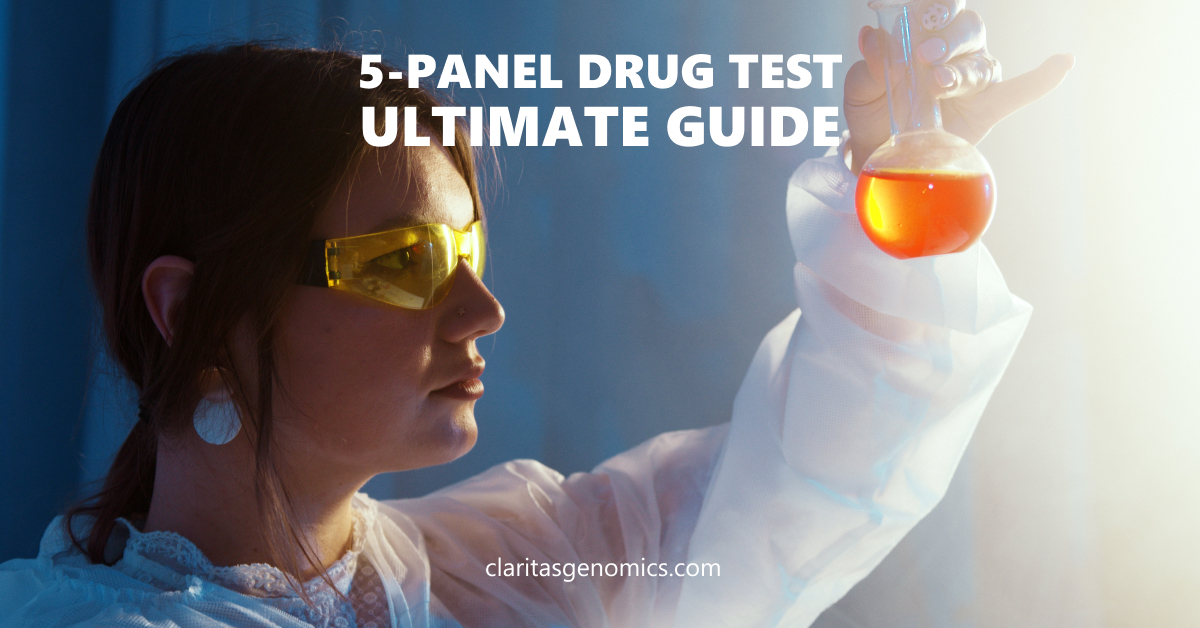The 5-panel drug test has gained popularity in recent years due to a few reasons. One of the main reasons is that drug abuse has become a significant public health concern. As a result, more employers, government agencies, and other organizations are implementing drug testing programs as a way to discourage drug use. It promotes a safer and healthier workplace or community, often aided by-products like Detoxify Mega Clean or Toxin Rid pills for those seeking to cleanse their systems before testing.
What Does the 5-Panel Drug Test Stand For?
You might be wondering, what is a 5-panel drug test? A 5-panel drug test is a common type of drug test used by employers, schools, and other organizations to detect the presence of five specific types of drugs in a person’s system. The test typically screens for cocaine, marijuana, opiates, amphetamines, and phencyclidine. A 5-panel drug screening requires a urine sample from the person being tested, which is sent to a lab. If any of the five drugs are present in the sample, it signals recent use and qualifies as a positive result.
 |
#1 THC Detox Pills
Toxin Rid Pills |
|
|
 |
Urine Simulation Kit (Powdered Human Urine+Heater) |
|
|
 |
Mega Clean Drink + PreCleanse Pills |
|
According to the National Safety Council, there is a 9% prevalence of substance use disorder among employees in the USA. Substance use among employees can have various consequences, both for the individual and the organization they work for. Substance use can impair an employee’s ability to perform their job duties effectively, leading to reduced productivity, poor work quality, and increased absenteeism and tardiness. Also, employees who use substances may be more likely to cause workplace accidents, which can result in injuries or even fatalities.
In response to this issue, some individuals opt for detoxification products like Detoxify Mega Clean or Toxin Rid pills to help cleanse their bodies of substances and mitigate the risks associated with substance use in the workplace.
What Does a 5-Panel Drug Test For?
As already stated, the 5-panel drug test is a drug test employed by many institutions to test for some specific drugs in a person’s body. The specific drugs being tested for include:
- Cocaine: a stimulant drug that can cause feelings of euphoria and increased energy levels. It is one of the most commonly used illicit drugs in the world. Cocaine is derived from the leaves of the coca plant (Erythroxylum Coca), which is native to South America.
- Marijuana (THC): a psychoactive drug derived from the cannabis plant that can cause altered perceptions, mood changes, and impaired coordination.
- Opiates: a class of drugs that includes prescription painkillers (such as oxycodone and hydrocodone) and illegal drugs like heroin.
- Amphetamines: a class of drugs that includes prescription stimulants (such as Adderall and Ritalin) and illegal drugs like methamphetamine.
- Phencyclidine (PCP): a hallucinogenic drug that can cause distorted perceptions and feelings of detachment from reality.
When Is the 5-Panel Drug Test Employed?
To understand the scenarios where 5-panel drug tests are employed, we need to take a look at the different variations of 5-panel drug tests such as a non-DOT vs DOT drug test. In certain situations, individuals may consider using products like Detoxify Mega Clean or Toxin Rid pills to prepare for 5-panel drug tests, whether they are non-DOT or DOT tests.
DOT Drug Test
The DOT (Department of Transportation) and non-DOT 5-panel testing refer to two different types of drug tests that are used in different contexts.
Working in safety-sensitive positions requires taking a DOT 5-panel drug test. The US Department of Transportation has set strict regulations for this and all results must be verified by laboratory testing. Typically, the five substances screened are marijuana, cocaine, amphetamines, opiates and PCP (phencyclidine).
Non-DOT Drug Test
On the other hand, non-DOT 5-panel testing refers to drug tests that are not mandated by the DOT. However, they are still used by many employers in various industries to maintain a drug-free workplace. The non-DOT 5-panel test typically includes the same five drugs as the DOT test, but the non-DOT drug test cutoff levels in 2023 are different from the cutoff levels of DOT testing and may be administered through a different testing process, such as a rapid or instant drug test.
It’s important to note that while the DOT 5-panel test is strictly regulated and mandated by law for certain positions, the non-DOT drug test is not regulated by the government and is up to the discretion of the employer. The specific testing procedures, cutoff levels, and consequences of a positive drug test can vary from employer to employer.

Occasions Where 5-Panel Drug Testing Can Be Done
- Pre-employment drug screening is a drug test that is conducted before an employer hires a job candidate to ensure that they are not using illegal drugs.
- In random drug testing, individuals are selected at random, without prior notice or warning, to undergo drug testing. This method of drug testing is often used in workplaces or schools to deter drug use and ensure a safe and healthy environment.
- Post-incident testing takes place after an accident or incident has occurred, to determine if drugs or alcohol were a contributing factor. The purpose of post-incident testing is to identify whether drugs or alcohol may have impaired an employee’s ability to perform their job safely.
- Return-to-work testing is a type of drug testing that takes place when an employee has been away from work due to a drug or alcohol-related issue and is seeking to return to their job.
- Reasonable suspicion testing is a type of drug testing that takes place when there is reasonable suspicion or cause to believe that an employee is using drugs or alcohol. Some individuals may opt for detoxification products like Detoxify Mega Clean or Toxin Rid pills to help cleanse their system before such testing.
Based on the specimen used, 5-panel drug testing can be grouped into two types which include urine and oral fluid drug testing. Below is a table detailing the differences between the two methods.
Urine 5-Panel Drug Testing VS Oral 5-Panel Drug Testing
| Criteria | Urine 5-panel drug testing | Oral 5-panel drug testing |
| Accuracy | Generally considered more accurate for detecting drug use | Accuracy is improving, but may not be as sensitive as urine testing for some drugs, such as marijuana |
| Prices | Generally less expensive than oral fluid testing | Generally more expensive than urine testing. |
| Prevalence | Widely used in drug testing programs, including workplace testing and drug treatment programs. | Becoming more common, but not yet as widely used as urine testing. |
Lab-based VS Rapid Drug Testing
Also, based on the method of testing, 5-panel drug tests can be lab-based or instant rapid. Below is a table highlighting the differences between these two methods:
| Criteria | Lab-based | Instant Rapid |
| Accuracy | Generally considered more accurate than instant tests | May have a higher rate of false positives or false negatives |
| Prices | Generally more expensive than instant tests. | Generally less expensive than lab-based tests |
| Prevalence | More commonly used in regulated industries, such as healthcare, transportation, and government, as well as in drug treatment programs. | More commonly used in non-regulated industries, such as retail, hospitality, and construction, as well as in schools and community programs. |
 |
#1 THC Detox Pills
Toxin Rid Pills |
|
|
 |
Urine Simulation Kit (Powdered Human Urine+Heater) |
|
|
 |
Mega Clean Drink + PreCleanse Pills |
|
How Are 5-Panel Drug Tests Conducted?
Both DOT and non-DOT 5-panel drug tests are conducted in a similar way. The individual being tested will get the collection cup and instructions on how to collect a urine sample. Then, Lab workers seal and send the sample to a laboratory for analysis.
DOT VS Non-DOT Drug Testing Procedure
In a DOT test, the sample must be collected by a trained and certified collector and the chain of custody must be carefully documented. The collector will verify the individual’s identity and may also check the temperature of the urine sample to ensure it has not been tampered with.
In a non-DOT test, the sample may be collected by a healthcare professional, a designated company representative, or the individual being tested themselves. The chain of custody may not be as strictly documented as in a DOT test.
Once the sample reaches the laboratory, it will undergo analysis for the presence of the five drugs included in the panel. If any of the drugs are detected above a certain threshold, the test will be considered positive. The laboratory will report the results to the employer or other authorized parties.
5-Panel Urine VS 5-Panel Oral Fluid Drug Test Procedure
A urine-based 5-panel drug test involves collecting a sample of urine from the individual being tested. The individual gets a collection cup and instructions on how to collect the urine sample. They will then provide the sample to a healthcare professional, or in some cases, a designated company representative or collection site. The healthcare professional or representative will then send the sample to a laboratory for analysis. In the laboratory, the sample will undergo screening for the presence of five different classes of drugs – amphetamines, cocaine, marijuana (THC), opioids, and phencyclidine (PCP). To ensure a negative result on a urine-based 5-panel drug test, individuals may employ methods such as using Detoxify Mega Clean or Toxin Rid pills prior to the test to help eliminate traces of drugs from their system.
An oral fluid-based 5-panel drug test, also known as a saliva test, involves collecting a sample of saliva from the individual being tested. The individual gets a swab or sponge to place in their mouth and rub against their gums and cheeks to collect a sample of oral fluid. The swab or sponge is then placed in a collection container and sent to a laboratory for analysis. In the laboratory, the sample will undergo the same five classes of drugs as in the urine test.
Both types of tests can take place on-site or in a laboratory. However, the oral fluid test can be easier to administer and may have a shorter detection window for some drugs compared to the urine test. Additionally, the oral fluid test may be more difficult to adulterate or tamper with compared to the urine test, as the collection process is directly observed and cannot be substituted with a sample from another individual.
Lab-Based VS Rapid Drug Testing Procedure
A lab-based 5-panel drug test takes place in a laboratory setting. The individual being tested provides a sample, either urine or oral fluid, which is then sent to a laboratory for analysis. In the laboratory, the sample is screened for the presence of five different classes of drugs – amphetamines, cocaine, marijuana (THC), opioids, and phencyclidine (PCP).
An instant 5-panel rapid drug screen takes place on-site, and results are obtained within minutes. The individual being tested provides a sample, typically urine or oral fluid, which is then placed into a testing device. The device contains pre-loaded reagents that will react in the presence of drugs, producing a visual result.
Cut-Off Levels for 5-Panel Drug Testing
The cut-off levels for 5-panel drug testing refer to the minimum amount of drugs or drug metabolites that must be present in a urine or oral fluid sample in order for the test to be considered positive. It’s important to note that different organizations or companies may use slightly different cut-off levels for their drug testing programs, and some may even use additional drugs beyond the five-panel test.
Additionally, it’s possible for an individual to have trace amounts of a drug in their system without having used it recently or intentionally, such as from exposure to secondhand smoke or contamination from other sources. When preparing for a drug test, some individuals opt for products like Detoxify Mega Clean or Toxin Rid pills to help cleanse their system of any remaining traces of substances that might trigger a positive result.
Below are the cut-off levels for the Urine 5-panel drug test:
| Drug Class | Cut-Off Levels |
| Marijuana (THC) | 50 ng/mL |
| Cocaine | 300 ng/mL |
| Amphetamines | 1,000 ng/mL |
| Phencyclidine (PCP) | 25 ng/mL |
| Opiates | 2,000 ng/mL (for morphine and codeine) |
Also, below are the cut-off levels for the oral fluid 5-panel test:
| Drug Class | Cut-Off Levels |
| Marijuana (THC) | 4 ng/mL |
| Cocaine | 150 ng/mL |
| Amphetamines | 500 ng/mL |
| Phencyclidine (PCP) | 10 ng/mL |
| Opiates | 30 ng/mL (for morphine) |
 |
#1 THC Detox Pills
Toxin Rid Pills |
|
|
 |
Urine Simulation Kit (Powdered Human Urine+Heater) |
|
|
 |
Mega Clean Drink + PreCleanse Pills |
|
What Are the Windows of Detection for Urine and Oral Fluid 5-Panel Drug Tests?
The window of detection for a drug test refers to the amount of time after drug use during which a drug or its metabolites can be detected in a biological sample. The length of the detection window varies depending on factors such as the drug class, dose, frequency of use, and individual metabolism. For example, the THC detection times in urine differ from the THC detection window in oral fluids. Here are the typical detection windows for a 5-panel drug test using urine or oral fluid:
| Drug Class | Typical Detection Window for Urine 5-panel drug test | Typical Detection Window for Oral Fluid 5-panel drug test |
| Amphetamines | 2-4 days | 1-3 days |
| Cocaine | 2-4 days | 1-3 days |
| Marijuana (THC) | Occasional use: up to 3 days, Regular use: up to 30 days | Occasional use: up to 24 hours, Regular use: up to 7-21 days |
| Opiates | 2-4 days | 1-3 days |
| Phencyclidine (PCP) | 7-14 days | 1-3 days |
How Are the Results of 5-Panel Drug Tests Interpreted?
The interpretation of the results of a 5-panel drug test, whether it is a lab-based test or an instant rapid test, is based on the presence or absence of drugs or their metabolites in the sample collected.
The lab-based 5-panel drug test can indicate the presence of any drugs from the five tested classes. A positive result will demonstrate that at least one class was detected above its cut-off level, while a negative outcome means each substance is under their respective threshold.
The test results are available within minutes, and the test kit will indicate whether each of the five drug classes tested for were detected above the cut-off level. If a drug is detected above the cut-off level, the test is considered positive for that drug class. If no drugs are detected above the cut-off level, the test is considered negative for all drug classes tested.
It’s important to note that while rapid tests are convenient and quick, they may have a higher chance of producing false positive or false negative results compared to lab-based tests. Any positive result on a rapid test should be confirmed by a lab-based test to ensure accuracy.
Practical Advises on How to Pass a 5-Panel Drug Test
Below are practical ways to pass a 5-panel drug test:
Diluting urine
This can be a credible way to pass a drug test especially if urine is the specimen being used for the drug test. This can be done by drinking copious amounts of water which in turn tends to decrease the concentration of drugs in the urine sample.
For added assurance, some individuals opt for supplementary methods like Mega Clean or Toxin Rid to enhance the detoxification process before a drug test, potentially further reducing the presence of drugs in the urine sample.
Staying away from foods that can cause false positive results
There are a few rare instances where certain foods and supplements can cause false positives on drug tests. For example, consuming poppy seeds (found in some baked goods and bagels) can cause a false positive for opioids on some drug tests, as poppy seeds contain trace amounts of morphine and codeine. Additionally, some herbal supplements, such as kava and St. John’s wort, have been known to cause false positives on certain drug tests.
Exercise
Physical activity can help accelerate your body’s metabolic rate and promote sweating, which can help eliminate drugs and their metabolites through your skin. Aim for at least 30 minutes of moderate to intense exercise each day.
Some more working methods
- The use of detoxifying agents such as Toxin Rid and Detoxify Mega Clean can help remove metabolites of drugs such as marijuana from the body.
- Use of oral saliva Neutralizing gum and Toxin Rid Rescue Wash can be a useful way of passing oral fluid 5-panel drug tests as this substance can help reduce the concentration of substances in your saliva.
FAQs
How long will urine stay good for a drug test?
Urine samples for drug testing can generally remain stable for several hours at room temperature or refrigerated, but it’s recommended to test the sample as soon as possible after collection to ensure the most accurate and reliable results.
If the urine sample is not tested within a few hours of collection, it should go to the refrigerator at a temperature between 2-8°C (36-46°F) until it is ready to undergo the screening process. This can help preserve the integrity of the sample. Also, It prevents the growth of bacteria or other contaminants that could affect the accuracy of the test.
Can a 5-panel drug test detect fake urine?
Not always. Most standard tests are designed with adulterants and tampering techniques in mind. However, there’s also newer technology out on the market that can sometimes slip through undetected. So when it comes down to it, whether or not your sample will be detected depends largely on what type of product was used for faking purposes as well as how accurate testing methods are employed by those conducting them. For instance, products like Detoxify Mega Clean or Toxin Rid pills are often employed to help individuals pass drug tests.
If I pass a home drug test, will I pass a Labcorp test?
When considering the reliability of drug tests, it is important to note that a successful home test result does not guarantee success in a laboratory-based exam. Home kits tend to be less sensitive than medical lab exams. They are more prone to false positives or negatives due to user error, contamination issues, or tampering. Nevertheless, abstaining from drugs for an extended period and having diminished levels of substance metabolites may significantly improve your chance of passing both types of examinations.
How far back does a 5-panel urine drug test go?
The 5-panel urine drug test is a long-standing tool for quickly detecting common drugs of abuse dating back to the 1980s. It has proven itself as an integral screening method in workplaces and other environments throughout its history.
How long does it take to get DOT drug test results?
Typically, most laboratories are able to send DOT drug testing outcomes within 24-48 hours of sample collection. Depending on the type of testing and how busy the laboratory is at any given time, determined turnaround times may vary little or greatly.
How much does a urine drug test cost?
Finding out the cost of a urine drug test can sometimes be complicated, but understanding how much you may need to budget for testing is key. In general, most tests that screen for popular drugs like marijuana, cocaine, and amphetamines average between $30 -$50 per screening urine drug test. However, more advanced tests that search wider spectrums or prescribed medications may be pricier than this estimate.
 |
#1 THC Detox Pills
Toxin Rid Pills |
|
|
 |
Urine Simulation Kit (Powdered Human Urine+Heater) |
|
|
 |
Mega Clean Drink + PreCleanse Pills |
|
Summary
There is an increase in the prevalence of drug use in the world, more so among the working population. This can impair productivity and hamper a good working environment, hence the need for drug screening tests like the 5-panel drug test.


